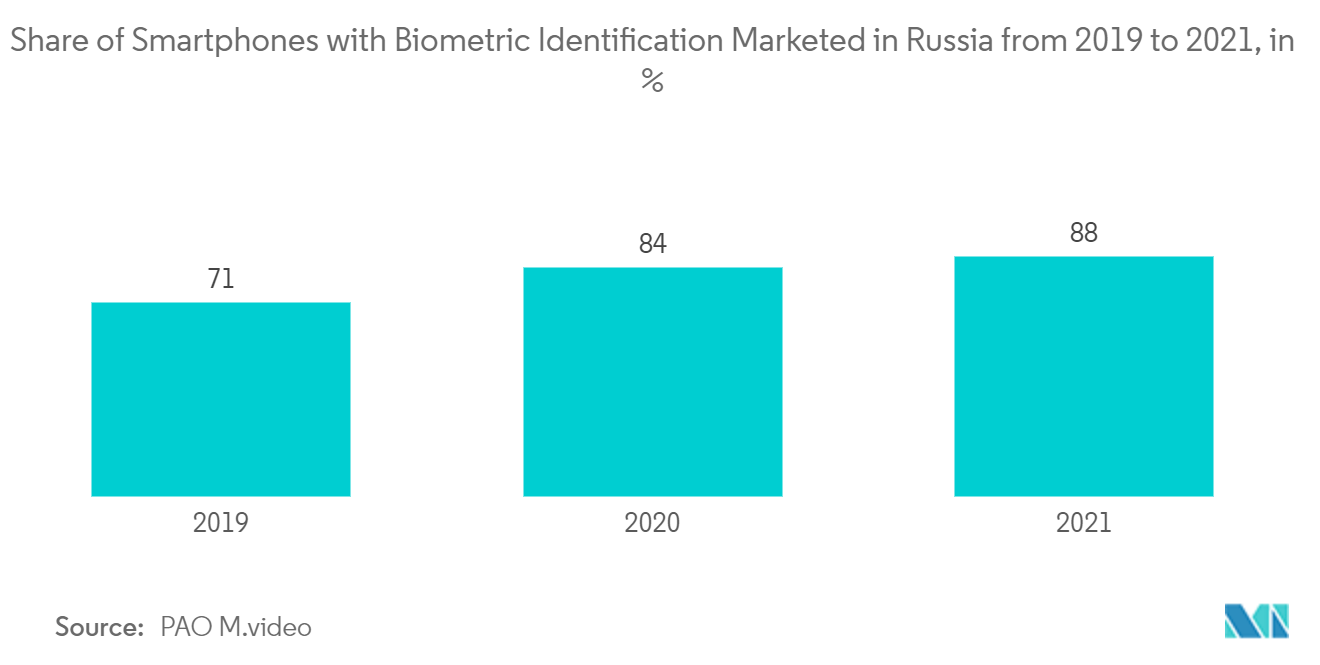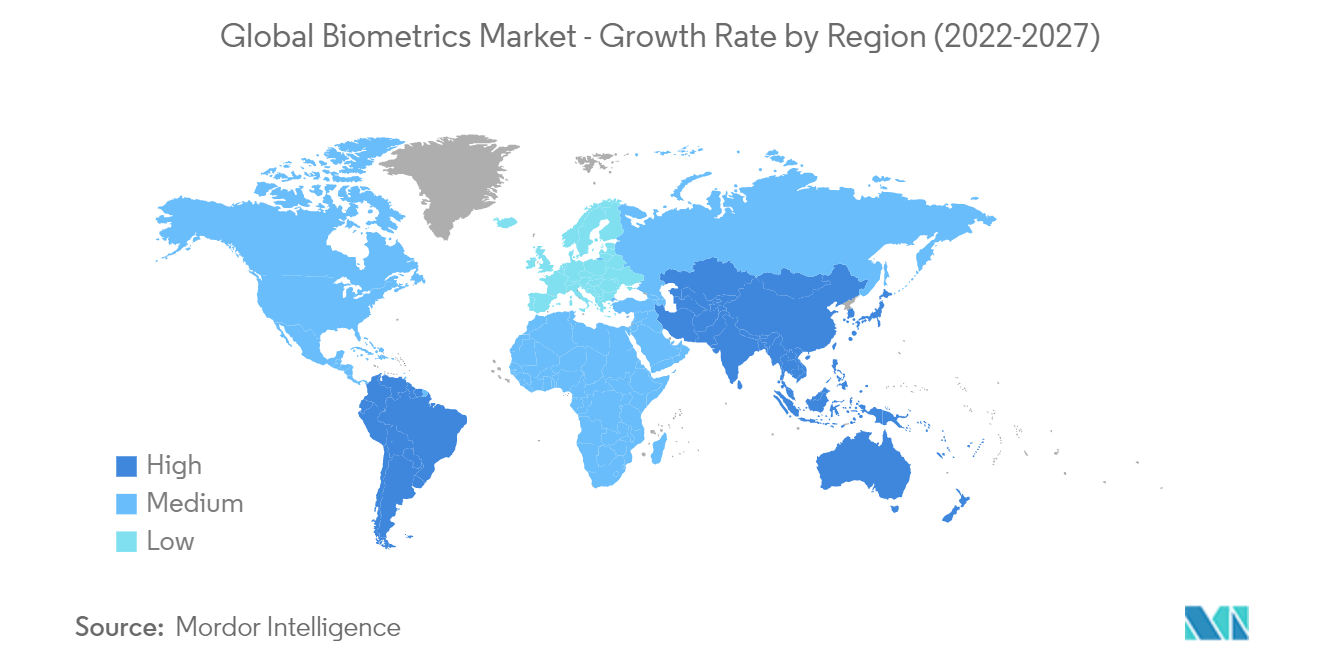Market Trends of Biometrics Industry
This section covers the major market trends shaping the Biometrics Market according to our research experts:
Software and Services Segment to Account for Largest Market Share
- Biometric software allows biometric devices and the computers and networks they are connected to be compatible and operable with each other. It also allows various application software on different operating systems to be compatible and allows for an effective connection. Software is an important part of biometric systems. For instance, software in signature verification systems compares signatures and checks for originality. As signature fraud is not always evident to human operators, it can become difficult for the human eye to identify fraudulent signatures accurately. Thus, signature verification software is being increasingly adopted, as it saves time, prevents human error during the signature process, and lowers the chances of fraud.
- Software in biometrics is further integrated with advanced technologies such as AI to detect fraud. For instance, IntelliVision's face recognition software is a deep learning-based facial recognition solution for integrators and developers that can detect faces of all ethnicities without racial bias and recognize them from the database of images. It provides facial recognition accuracy of about 99.5% on public standard data sets. Moreover, it can also be used on-server and in-cloud.
- In September 2021, Gnani.ai, a player in the conversational AI and voice security domain, announced the launch of its voice biometrics software, Christened armour365. The biometric solution is suitable for industries such as Banks, Defense, Healthcare, among others.
- The on-premise biometric systems need IT infrastructures, such as servers and networks. This infrastructure is expensive and requires maintenance. Thus, biometric service is increasingly gaining traction, as it does not need any specialized IT infrastructure or maintenance for the deployment of a biometric project.
- Moreover, companies are embracing biometric service as it is extremely scalable. The number of enrollments varies from business to business, according to their size. Biometric service helps companies to subscribe to services as per their needs. It is also very easy to scale up or scale down the facilities by changing the subscription plan.
- Companies, such as Aware Inc. and others, offer biometrics software products and services as independent suppliers, i.e., independent from hardware vendors and system integrators. These benefits include the mitigation of risks and costs associated with hardware and software obsolescence and system maintenance challenges that have the potential to weaken the performance and shorten the life of a solution.

Asia Pacific is Expected to be the Fastest Growing Market
- Increasing mobile payment transactions coupled with increasing private corporations and government initiatives towards adopting biometric authentication systems are expected to be the major drivers for the biometrics market in the region. According to the Center for Strategic & International Studies Report (CSIS) 2021, China is at the forefront of the global digital payment revolution.
- Chinese enterprises generated an anticipated USD 2.9 trillion in transaction value in 2020, based on a global market of USD 5.4 trillion in transaction value in digital commerce and mobile payments. China's major emphasis on influencing global digital infrastructure, e-commerce, and new projects like the digital yuan and the proposed new IP could lead to a more authoritarian path for digitization. For instance, in 2021, more than 3.51 million corporate wallets and 20.87 million personal wallets were opened, with a total transaction volume of 70.75 million and a transaction value of USD 5.41 billion (RMB 34.5 billion).
- On the other hand, the increasing demand for biometric authentication systems across various end-users, including retail, gaming, banking and financial sector, hospitals, etc., are significantly influencing the market's growth across the country. For instance, The China Construction Bank (CCB) has decided to use biometric cards in its digital renminbi experiments in collaboration with IDEX Biometrics. The bank has already released a digital yuan wallet app. The NFC-enabled biometric smart card will allow users to utilize digital currency without the need for a smartphone. These biometric cards will serve as digital hard wallets for members of the Chinese digital currency trial, known as DCEP. Fingerprint sensors and biometric software will protect these smart cards.
- Additionally, end-user industries, such as BFSI and healthcare, are home to many critical and highly valuable assets. Any breach or lapse in security can be disastrous and costly, with revenue loss. Thus, these industries in the country are enforcing stringent measures to protect sensitive customer data with cutting-edge technology. For instance, in February 2021, customers can enter the Green Leaves+ shop-and-go store at Japan's Yokohama Techno Tower Hotel using their faces and a swipe of their palms to verify their identity. Customers can use the smartphone application's multi-biometric authentication technology, connecting their face and palm vein recognition information. Customers can also scan a QR code displayed on the Green Leaves+ app to access the store.
- Similarly, in July 2021, Fingerprint Cards (a Swedish biometrics company) and MoriX (a Japanese electronics company) formed cooperation to develop and launch biometric payment cards in Japan. According to the press release, the new card will have Fingerprints' T-Shape module, which has ultra-low power consumption and is designed to be integrated into payment cards using normal automated manufacturing methods, according to the business. Furthermore, the company stated that there is an "increasing desire for card transactions among Japanese consumers," who seek touchless, secure, and frictionless payment methods.

